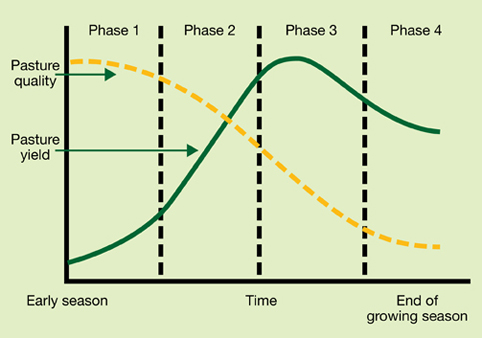- Location
- NSW, Newstralya
Shading and senescence make a large difference with lower sunlight, not so much with summer's intense light.
But that's the only flaw with the old saying "grass grows grass" as @Treg pointed out early on.
You can sort of see a similar effect here with forage maturity esp. in dairy operations where the cows are calved down on grass, after a run of frosts and a lot of shading that stockpiled grass in the spring has really lost its goodness, the spring regrowth is too short and immature.... so the cows struggle either with low sugar diets - or low sugar diets
So a prune-back of sorts is a good thing even without the actual dormancy Blaithin describes, in trying to maintain the balance between quality and quantity.
It's still better to have a lot of average food than very little great food.
part of the whole concept behind planned holistic grazing is to keep the pastures in that "sweet spot" of growth, quality & quantity, that doesn't let root reserves get punished, doesn't let too much old, high lignin or oxidised material dominate, while still providing decent quality & optimising plant growth
sounds easy aye

the aim with the grazing management is to always keep it in "phase 2", if possible
the Phases of pasture growth can be quickly determine by cow pats of cattle grazing it
really wet & sloppy - phase 1
really dry & firm - phase 3 +
moist, soft but well formed - about right
in an Australian scenario anyway
it is also why burning was such a popular management tool in "brittle" environments - to remove that dead dry material. In warm season, tropical grasses, this removal ( ideally by trampling rather than excessive fire ) is actually required for long term survival of the grass clumps. eg - massive migrating herds across the African grasslands. I think this formed the basis of a lot of Savory's early observations & work ?
Last edited:











